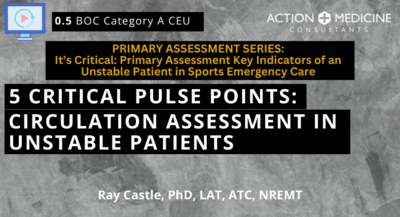General Course Information
Learning Material
30:37
AI Chat Bot
The chat bot may hallucinate. Please double check results.
5 Critical Pulse Points: Circulation Assessment in Unstable Patients › Learning Material
Presentation (Video)
Updated Jan 22, 2024
Copyright © 2025 Action Medicine Consultants, LLC
___MESSAGE___
___MESSAGE___


